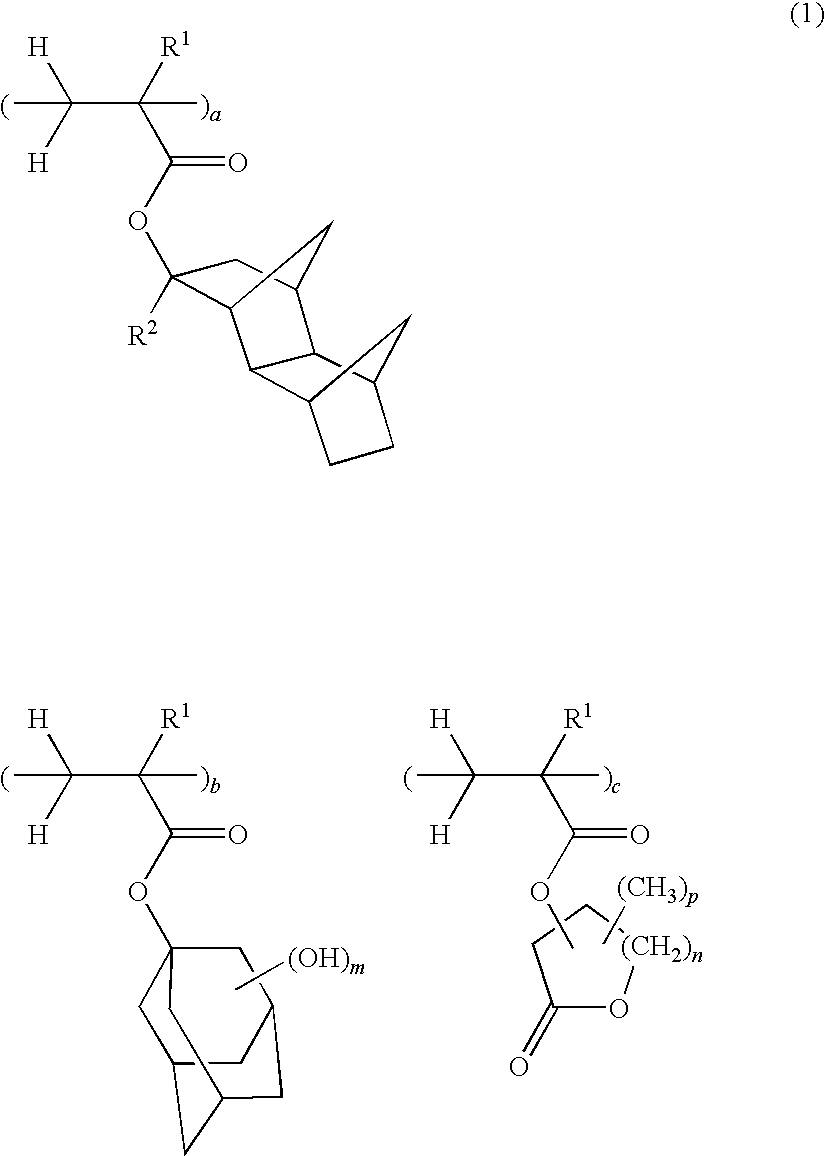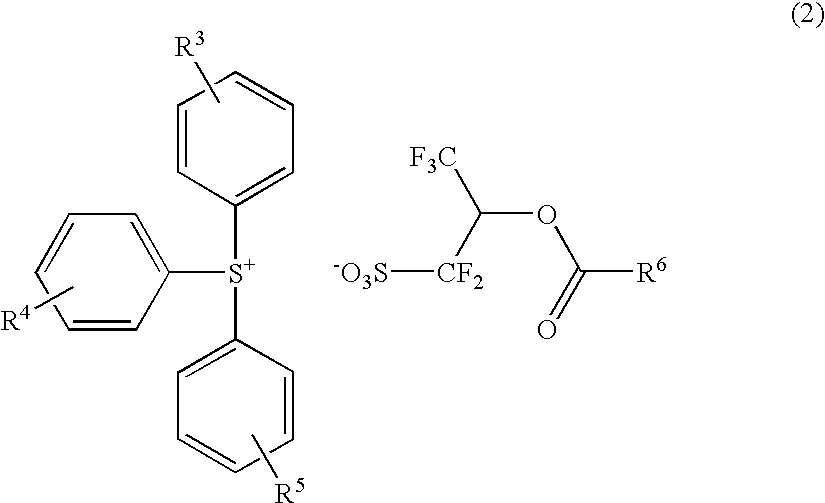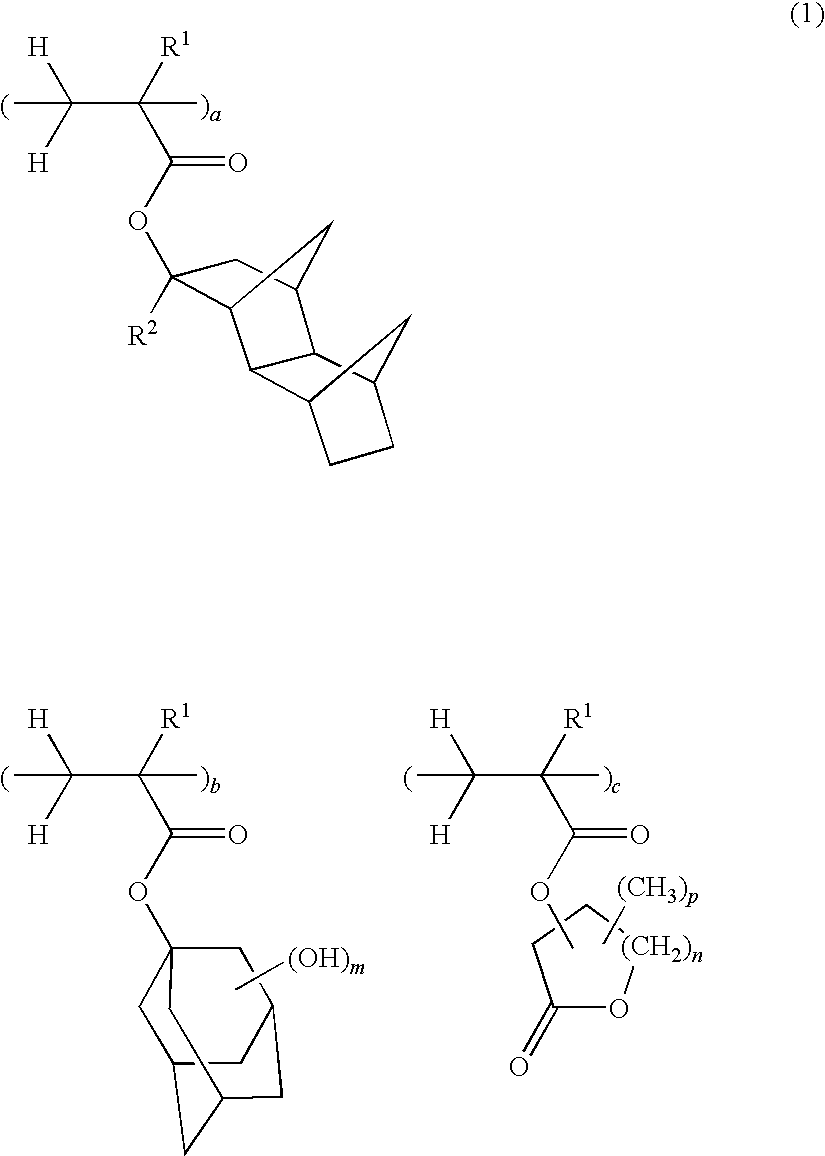Positive resist composition and patterning process
a composition and resist technology, applied in the field of positive resist composition and patterning process, can solve the problems of uneven fine line size, extreme exacerbated properties, and rough line edges, and achieve the effects of high rectangularity, reduced rough line edges, and high resolution
- Summary
- Abstract
- Description
- Claims
- Application Information
AI Technical Summary
Benefits of technology
Problems solved by technology
Method used
Image
Examples
example
Examples of the invention are given below by way of illustration and not by way of limitation. Mw is weight average molecular weight.
[Preparation of Resist Material]
examples
Positive resist solutions were prepared by dissolving a polymer, acid generator, and basic compound in a solvent in accordance with the formulation shown in Table 1 and passing through a Teflon® filter with a pore size of 0.2 μm. In all runs, the solvent contained 0.005 wt % of surfactant KH-20 (Asahi Glass Co., Ltd.).
TABLE 1ResistResinAcid generatorBaseSolvent 1Solvent 2R-01P-01 (80)PAG-1 (10.1)Base-1 (1.4)PGMEA (1,120)CyHO (480)R-02P-02 (80)PAG-1 (10.1)Base-1 (1.4)PGMEA (1,120)CyHO (480)R-03P-03 (80)PAG-1 (10.1)Base-1 (1.4)PGMEA (1,120)CyHO (480)R-04P-04 (80)PAG-1 (10.1)Base-1 (1.4)PGMEA (1,120)CyHO (480)R-05P-05 (80)PAG-1 (10.1)Base-1 (1.4)PGMEA (1,120)CyHO (480)R-06P-06 (80)PAG-1 (10.1)Base-1 (1.4)PGMEA (1,120)CyHO (480)R-07P-07 (80)PAG-1 (10.1)Base-1 (1.4)PGMEA (1,120)CyHO (480)R-08P-08 (80)PAG-1 (10.1)Base-1 (1.4)PGMEA (1,120)CyHO (480)R-09P-09 (80)PAG-1 (10.1)Base-1 (1.4)PGMEA (1,120)CyHO (480)R-10P-10 (80)PAG-1 (10.1)Base-1 (1.4)PGMEA (1,120)CyHO (480)R-11P-11 (80)PAG-1 (10....
PUM
| Property | Measurement | Unit |
|---|---|---|
| refractive index | aaaaa | aaaaa |
| wavelength | aaaaa | aaaaa |
| wavelength | aaaaa | aaaaa |
Abstract
Description
Claims
Application Information
 Login to View More
Login to View More - R&D
- Intellectual Property
- Life Sciences
- Materials
- Tech Scout
- Unparalleled Data Quality
- Higher Quality Content
- 60% Fewer Hallucinations
Browse by: Latest US Patents, China's latest patents, Technical Efficacy Thesaurus, Application Domain, Technology Topic, Popular Technical Reports.
© 2025 PatSnap. All rights reserved.Legal|Privacy policy|Modern Slavery Act Transparency Statement|Sitemap|About US| Contact US: help@patsnap.com



